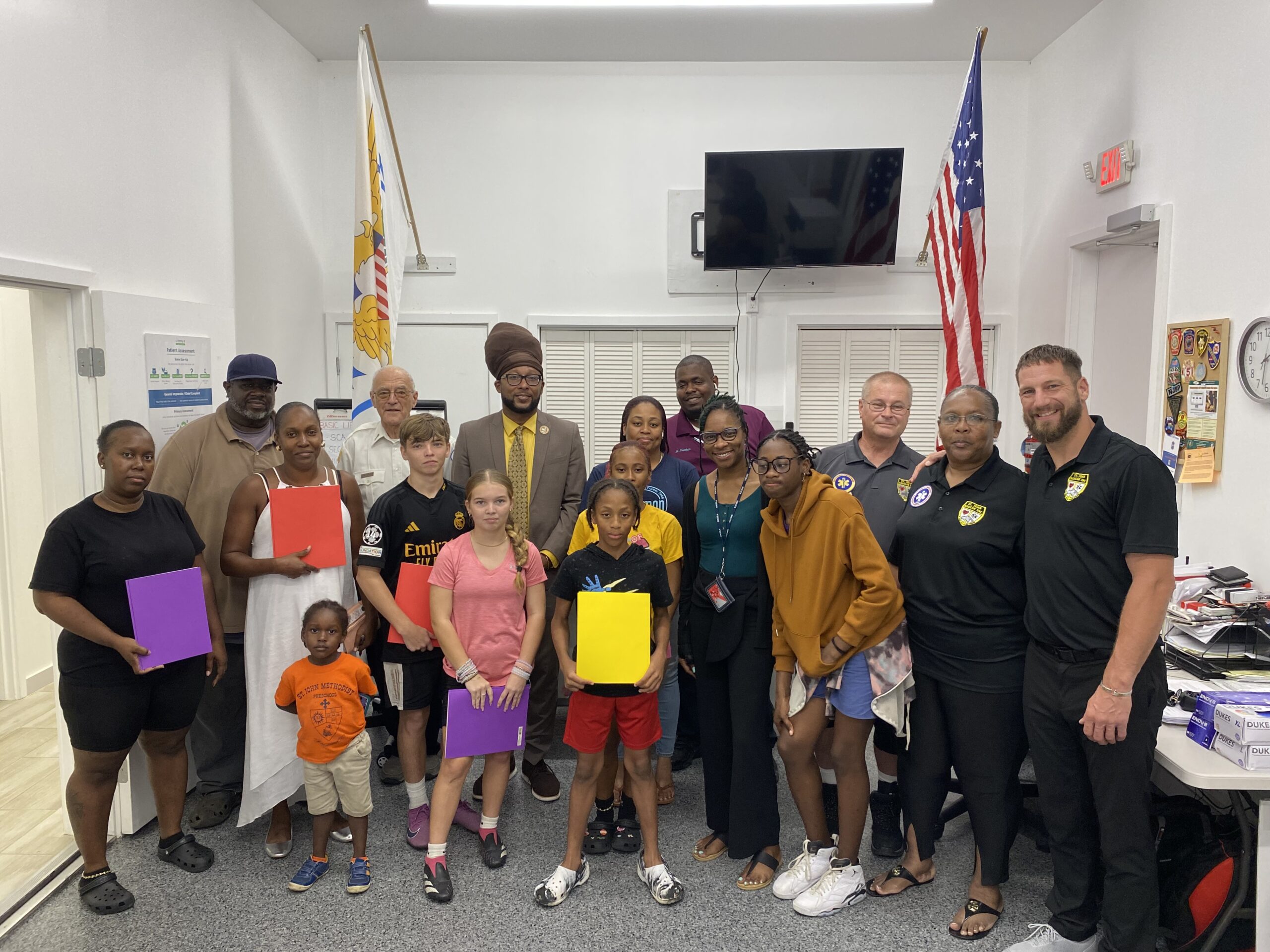
When a car plunges off a road, when a person goes missing, or when a community event requires extra volunteers, St. John Rescue is always on hand.
Now, to ensure that there will be future members of this vital community organization, St. John Rescue has launched its first Junior Rescue Program.
It’s one of several initiatives that St. John Rescue is establishing to make sure that the organization continues to broaden its outreach and keep its members up to date with the latest equipment and techniques currently used in public safety.
Junior Rescue Program Began in January
Fifteen youngsters ages 11-13 are now meeting after school up to three times a week at the St. John Rescue headquarters on Gifft Hill.
They’re now starting to learn CPR and First Aid, according to Emergency Medical Technician Jackie Parsons Browne, who heads up the program.
Browne’s interest in public safety began when she was a youngster on St. John. “I was a PAL kid — that is Police Athletic League. Back then, it was led by Harry Daniel, Ina Daniel, and Lorraine Sprauve. I always told myself, ‘When I’m bigger, I’m going to pay it forward.’”
These days, she tells youngsters that she knows what it’s like to “grow up gangsta.” “I tell them, ‘Do you know if a friend gets stabbed, you can save their life by applying pressure to stop bleeding?’”
She also tells them that they can learn what to do if a grandparent or other adult has trouble breathing or needs intervention for diabetes.
The afternoon sessions always begin with time for students to complete their homework, and then it’s on to the hands-on work of learning lifesaving techniques. They will soon get training in life skills strategies and participate in public events along with instructors Brett Huntley, Bob Malacarne, and Landry Boysen.
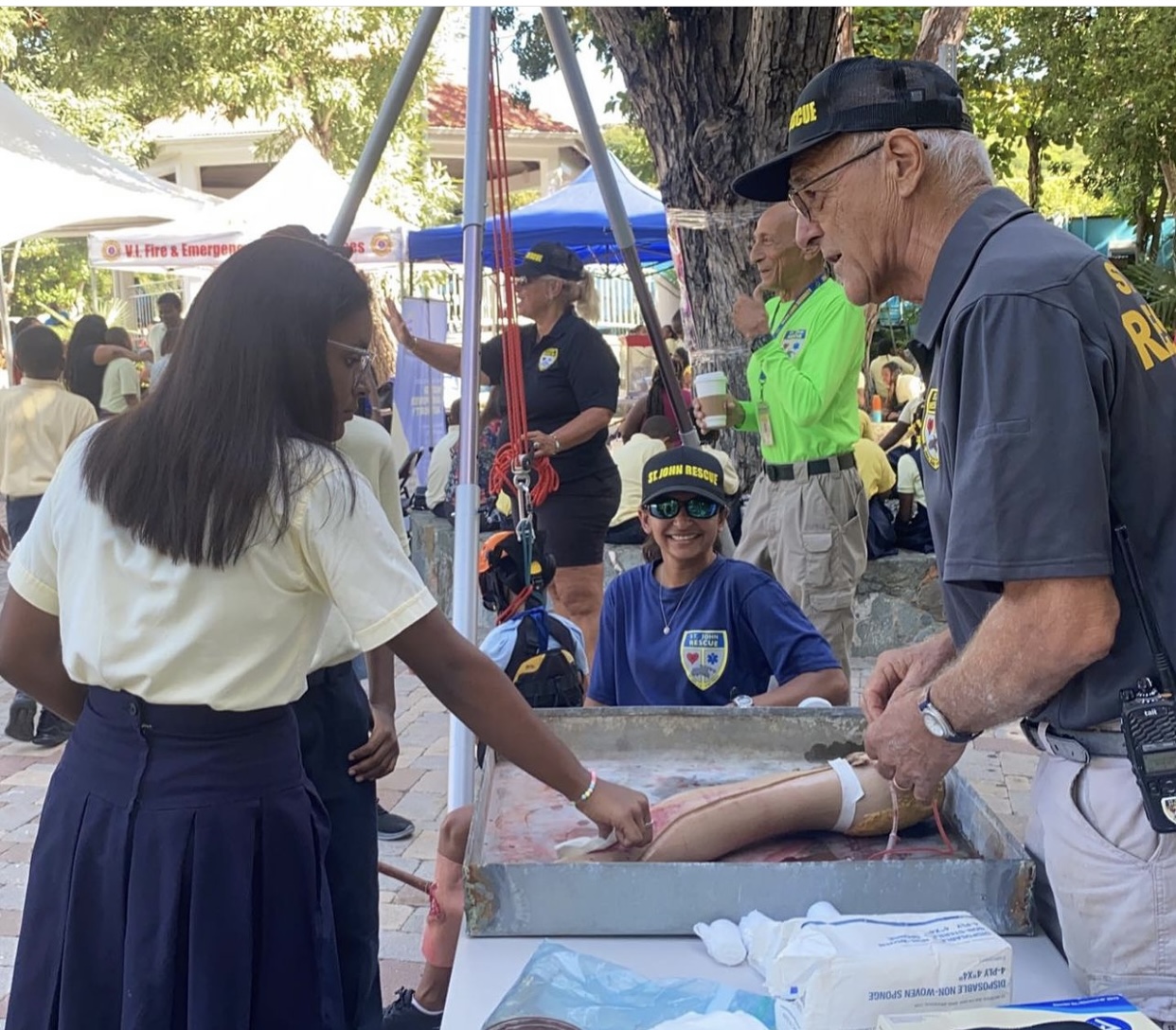
The program, funded by the Community Foundation of the Virgin Islands, will continue throughout the summer. For further information, contact Bowne at St. John Rescue’s office at 340-693-7377.
New Course for Emergency Medical Responders starts March 27
St. John Rescue is offering a 57-hour training course for Emergency Medical Responders. The nationally accredited course offers more advanced training for those who want to go beyond basic CPR and First Aid but are not yet ready for a full EMT training course.
Standards for the class include “the ability to understand the basic anatomy of the human body, conduct a preliminary physical exam for both medical and trauma complaints, understand the basic pathophysiology of medical and trauma complaints, and formulate an appropriate treatment/transport plan.”
The cost of the course is $425, which includes books and materials, but members of St. John Rescue can take the course for free as part of a two-year responder commitment to the organization.
The class begins March 27 and ends June 19. To register or get further information, contact Brett Huntley, training captain/clinical educator, at stjohnrescueeducation@gmail.com or by calling 727-265-7122.
Rescue Volunteers Trained in Advanced Underwater Skills
St. John Rescue has offered three advanced courses to teach divers to respond to a variety of emergency situations. If a car goes into the sea or if a fleeing suspect throws evidence into the water, trained volunteer divers know what to do.
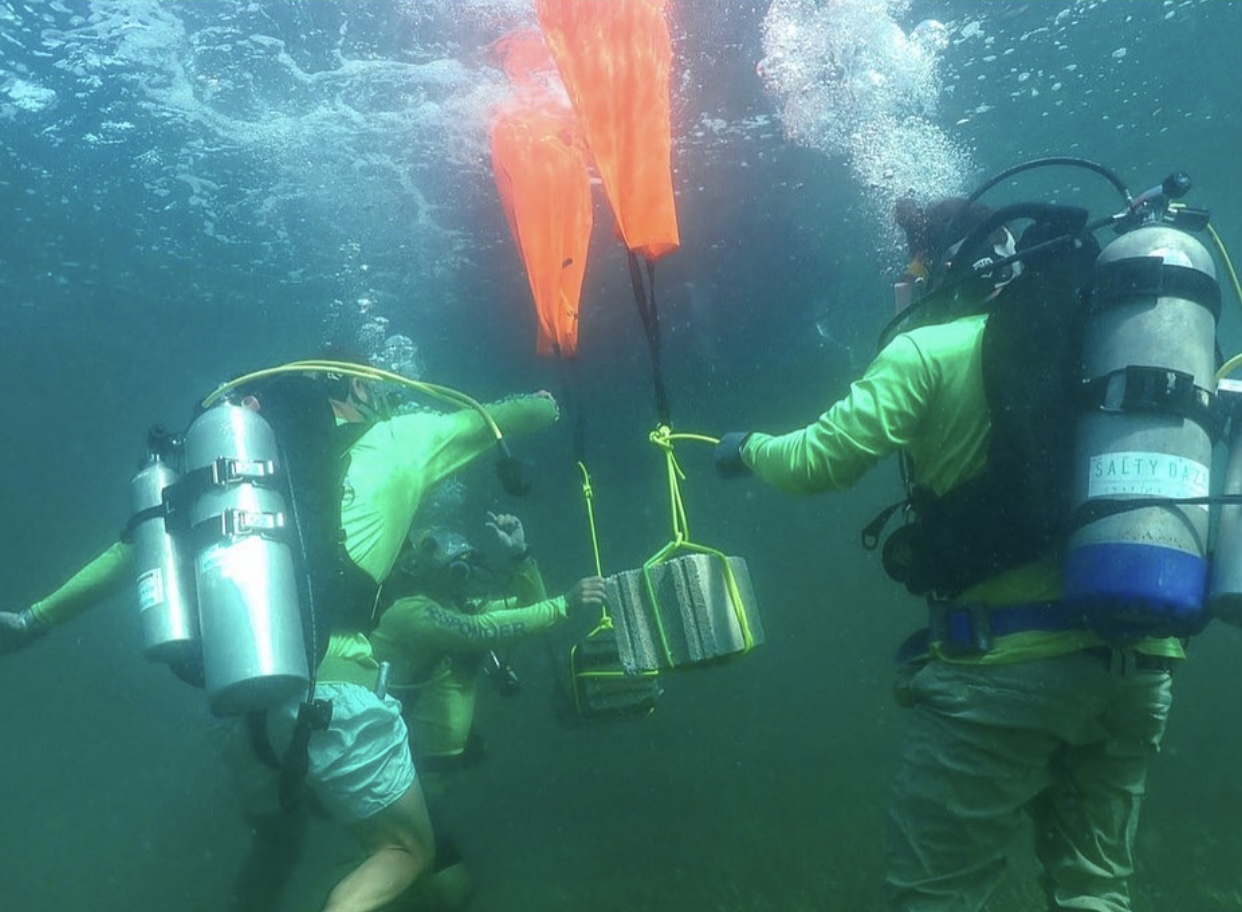
Valerie Hewitt, who now serves as the organization’s executive director, said the first course in rescue diving teaches skills that all recreational divers can use.
“You learn how to bring anyone out of the water who is distressed or drowning,” Hewitt said. “And you learn to work with a full face mask which allows communication and can help you avoid contamination in the water.”
The more advanced search and rescue course teaches divers to locate small or big items. “You also learn to conduct search-and-rescue patterns and how to work as a team,” Hewitt said.
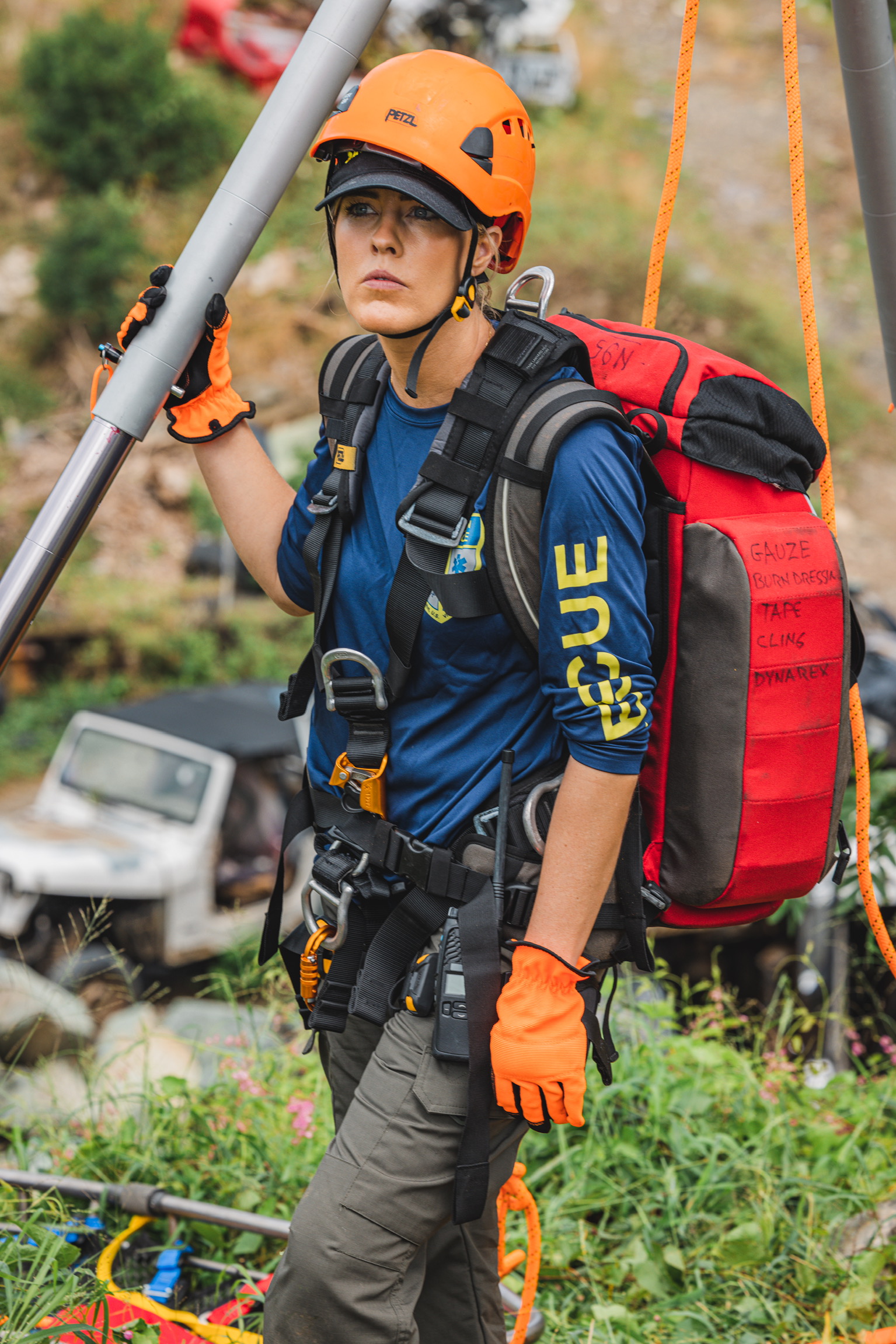
Most recently, St. John Rescue brought in specialty dive instructor Larry Antonacci from Lake Monticello Water Rescue in Virginia. He taught a class in public safety diving including advanced navigation skills and deployment of lift bags to bring sunken objects to the surface.
“You also practice with a ‘black-out’ mask so you can’t see anything,” Hewitt continued. “The instructors turn off our air, and we learn to reconnect the tank underwater so that we’re ready for any scenario.”
Oxygen for STJ Residents Will Soon Be Available
In 2021, St. John Rescue won a Community Development Block Grant to purchase an oxygen generator so that a reliable source of oxygen would be available to St. John residents.
“We provide oxygen to Myra Keating Smith Community Health Center, Fire/EMS, National Park Service, St. Thomas Rescue, and to any person on St. John in need of oxygen,” said Bob Malacarne, president of St. John Rescue.
Malacarne has plans to make oxygen even more accessible by purchasing ten portable oxygen concentrators. “They’re battery operated, so they can be used after a hurricane. We’re working with Human Services and Love City Strong to identify people who might need them. We’re hoping they will be distributed within the next few weeks,” Malacarne said.
St. John Rescue is Fully Certified
“We want people to know that we are in total compliance with all territorial and national standards for EMTs, and we are certified as a training center with the American Safety and Health Institute, American Red Cross, and National Association of EMS Educators,” said Malacarne.
St. John Rescue is certified to offer classes for Emergency Medical Technicians and Emergency Medical Responders. Malacarne hopes to offer a course for EMTs in 2025 and establish a community paramedics program.
“Brett Huntley has been working as our trainer,” he continued. “He’s in the second year of a two-year grant to pay for his services. We’re hoping to get another grant for another two years,” he said.
Huntley just trained more than 100 firefighters on St. Thomas and St. John in CPR, and he offers courses to the public every month. CPR is offered on the second Saturday; First Aid is on the third Sunday. Both courses are given from 9 a.m. to 1 p.m. To register, contact St. John Rescue at 340-693-7377, email stjohnrescue@gmail.com or go to their website.
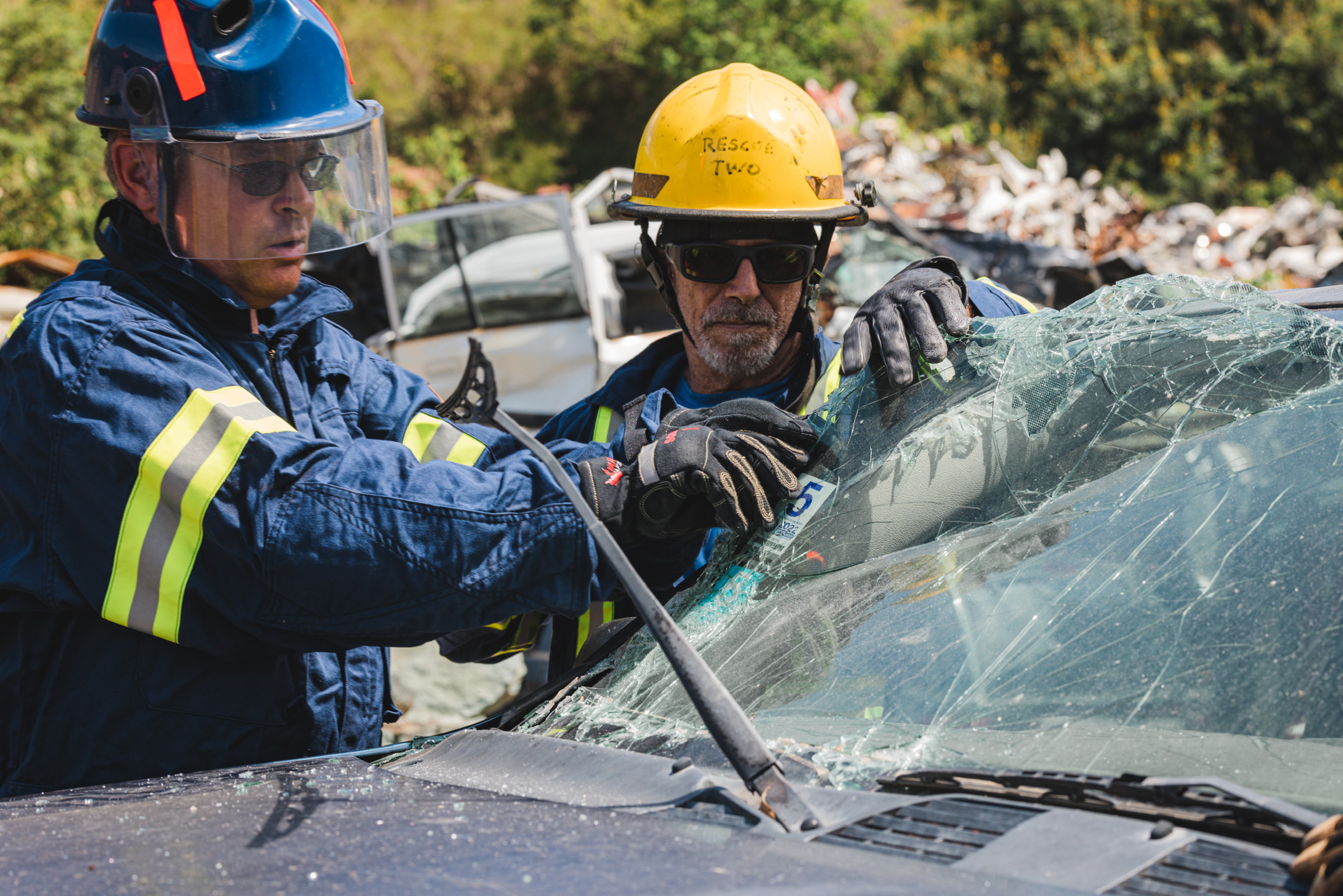
Meeting all local and national standards is a source of pride for the organization, but Malacarne said it brings on additional costs as it sets standards for quality and maintenance of equipment.
Although their training equipment is up-to-date, most of their ancillary vehicles — aside from one new vehicle that is still being paid for — is old and in need of replacement.
“We have a very old boat which is not seaworthy now,” said Malacarne. “Our goal is to buy a new, safe boat, something that has a place to store supplies, a covered area to treat patients, and is at least 26 feet long so it can cope with our seas,” he said.
St. John Rescue is working to place AEDs (automatic external defibrillators) in remote places on St. John. They recently set up AEDs at Annaberg and at Salt Pond, and are planning to install one near the Reef Bay Trail. They’re looking for funding to purchase a portable state-of-the-art machine to perform chest compressions.
All of these initiatives take money, and St. John Rescue, as a nonprofit, is grateful for all donations. They’re on the scene for most outdoor community events, and sometimes their presence makes a difference between life and death.

For example, on March 3, Delegate Stacey Plaskett led a procession up the Ram Head Trail to unveil a plaque commemorating the 1733 slave revolt on St. John. As usual, St. John Rescue was stationed nearby in case someone had an emergency during the somewhat challenging climb. The hikers all were fine, Malacarne said, but when a swimmer coincidentally suffered distress while swimming in Salt Pond Bay and needed treatment, St. John Rescue was right there to assist.


